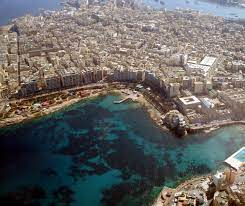“Ten years ago we had a better quality of life … we have become overbuilt and overcrowded … do not ask me to make Malta a welcoming home for foreign workers, even in a Maltese only Malta, we are congested. It is beautiful to have diverse cultures and religions … but you are forgetting the very real physical smallness of this island … I only see buildings, heavy traffic, sewage and feel suffocated …there is no quiet place to go to unless we go overseas …”
The woman who told me this, in response to my proposal to become an open and inclusive multicultural society, lives in Sliema which with 15,167 persons per square kilometre is the third most densely populated place on earth. Only Macau (21,045 per sq km) and Monaco (19,493 per sq km) are more densely populated than Sliema in the whole world. Even Senglea (14,418 per sq km), Tal-Pieta’ (13,047 per sq km), and Fgura (11,434 per sq km) are much more densely populated than Singapore (8,274 per sq km) and Hong Kong (7,042 per sq km) that are ranked as the third and fourth most densely populated territories in the world.
Countries like Singapore (double the size of Malta but with a population ten times as big) have tried to handle high population density and achieve liveability despite the pressure on social space, the limited supply of housing, hospital beds, school places, traffic and other infrastructure.
The Centre for Liveable Cities of Singapore has developed a Liveability Matrix that shows the correlation between density and liveability rankings where the denser a city, the less liveable it becomes. In its early days of independence, 60 years ago, Singapore experienced many of the urban challenges Malta is facing today: overcrowding, slums, traffic congestion and environmental pollution. Singapore managed to overcome many of these challenges through planning, not plodding as we do.
Since the 90s local demographic experts have been alerting us to the implications of a declining birth rate and an ageing population, including the need to expand the workforce with immigrants if the country was to support a welfare state with a higher demand for medical care and services for the elderly.
In the Global Liveability Index Singapore is ranked 25th while Malta is ranked 49th. Malta is safer and cheaper than Singapore when it comes to property and cost of living but Singaporeans have a higher income, better health care, much less pollution, lower traffic congestion. a greener urban environment and more effective measures to deal with global warming.
800,000 in 2040
Although Singapore is managing its population density much better than Malta, Singaporeans complain about the lack of beds in hospitals, as well as healthcare workers facing burnout and more expensive, smaller and closely packed-together apartments. They feel that public services are not coping with increasing demand and that access to education, the job market and even “leisure activities and space” would be improved with a smaller population. Stress and unhappiness many claim can be traced back to overpopulation.
Singapore covers an area of 720sq km and the population is over 5 million. Experts have advised Singapore that it can sustain a population of 10 million people with the right infrastructure and planning. To support that population level, Singapore will need “to build more high-rise buildings, improve the density and reliability of the public transport systems, reduce the number of cars on the roads, improve water, sanitation and power supplies, reduce wastage by active recycling, improve all round efficiency in public services and a great government”.
The citizens of Singapore are not thrilled about living in a country about to double its present population. People are complaining that they already face severe problems due to the sheer number of people cramped on a tiny island.
There are similar calls locally to reduce the inflow of foreign workers as Malta has exceeded its carrying capacity. The International Monetary Fund last month warned about rising inequality and that “the provision of physical infrastructure (e.g., roads) and public services (e.g., health) has not caught up with population growth”. If rising inequality leads to social division we all suffer.
Our population has grown from 418,755 in 2010 to 536,740 last month. While the Maltese population grew by only 1.7%, the foreign population grew five-fold from 6% in 2012 to 25% a decade later. Our workforce consists of 203,000 Maltese and 107,000 from other countries, 34,900 of them from EU countries. Our fertility rate – which is measured by the number of live births per 1,000 women of childbearing age – also fell from 1.43 to 1.08, among the lowest in the world. In 2015, the largest Maltese age cohort were those aged between 15 and 34, at over 117 thousand people. By 2035 the number of people aged between 15-34 is expected to fall to 88,000, and those over 65 to rise to 100,000
With fewer Maltese available for employment and a higher number of dependent elderly Maltese, where are we going to get the required number of workers, if not from overseas? An exercise carried out by Malta’s Economic Policy Department has found that in order to maintain an average economic growth rate of 4.2%, roughly what was experienced over the past years, Malta’s population would have to increase to 800,000 by 2040, unless a new economic model was developed. We already need to increase our carrying capacity.
Population density and diverse ethnicities become a serious crisis when they are managed poorly or even worse not managed at all. Ignoring problems causes them to grow, fester and possibly destroy societies. We need sustainable economic growth and must take all the necessary steps to ensure a liveable Malta, a common home welcoming all of us who inhabit this country. If we dehumanize foreign workers we dehumanize ourselves. If we all become strangers in a strange and dismal land we will be playing with fire and get burned for sure.
Times of Malta 16 February 2024




